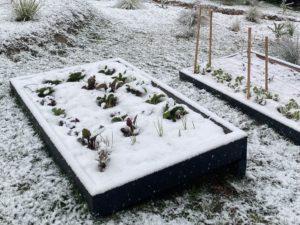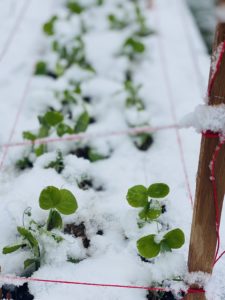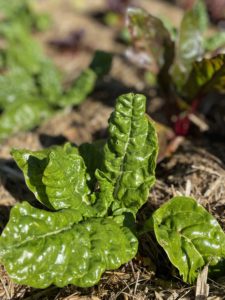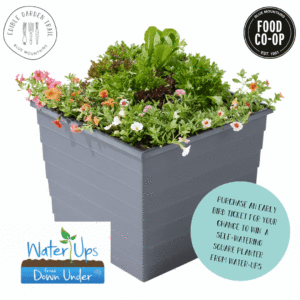Fighting frost

Give your plants a fighting chance against Jack Frost with these tips from horticulturist, Eric Sturman, of WaterUps.
Frosty mornings may look pretty but you might find that your plants have not enjoyed the cold night as much as you have tucked up inside by the fire. Frost occurs after a clear night when the temperature dips below zero. Water vapour in the air is frozen turning into ice crystals that settle on most surfaces. Once frost comes into contact with a leaf, the water in the cells of plants quickly begin to freeze too, expanding in the process. The expansion of the water in the cells causes the cell walls to burst. This can result in damage or death to that plant.

So what can be done to mitigate damage? To protect your plants against frost damage, there are a few things that you can do. Firstly, strong and healthy plants are better prepared to take a few hits. By regularly feeding your plants with a seaweed solution, the cell walls of the plant will thicken. A thicker wall is less likely to burst if put under pressure.
A 40mm layer of mulch will help insulate the soil from massive temperature fluctuations, so it is probably worth topping up your mulch layer for winter. A good layer of mulch can prevent the rapid freezing and thawing that causes ‘frost heave’ which can damage bulbs and the shallow roots of your plants.
By choosing the correct position in your garden for frost sensitive plants you can take advantage of protected areas, microclimates and residual heat from brick and stone walls. Frost is cold and heavy, meaning that it will settle into low lying areas. Placing your plants away from dips in the landscape will help to avoid the worst of frost damage.
Finally, once you have done all of the above, you can wrap your plants, trees, or entire garden beds in frost cloth. Frost cloth has been specifically designed for the purpose of retaining heat and trapping frost. By trapping frost, I mean that the felty surface will actually encourage frost to stick to it, rather than the leaves of your veg. This material comes in many grades depending on the severity of the frost. It’s best to remove any covering each morning, but the frost blanket material will let in between 50 and 70% sunlight, allowing you to leave it in place for a few days or weeks without causing too much ill effect.
If you don’t have, or can’t get any frost cloth, then anything from plastic sheeting to old bed sheets will do. Just keep in mind that these alternatives will definitely need to be removed and replaced daily as they won’t let in any light and the plastic may have to opposite effect and cook your plants on a sunny winter day.

Many winter vegetables are not worried by a bit of frost, in fact, brassicas have been credited with gaining some sweetness if exposed to a few harsh nights. I know I won’t pick an orange until the first bitterly cold night. Apart from cabbage, cauliflower, kale and the other brassicas, all of your onions, garlic, silverbeet and the like will laugh off the cold.
Unfortunately, some of our salad staples are not very good with frost. Many soft herbs such as basil, coriander and parsley can really get knocked around by it. Lettuce and your soft leafy greens aren’t much of a match for Jack either. A great solution for growing these tender plants is to grow them in a pot or planter over autumn and winter. A small planter would be perfect for this, particularly if you put it on a movable base. It could then be moved around to catch the fleeting winter sun and tucked away at night to avoid the frost.
Following these few simple steps and keeping an eye on the weather report, so you have enough time to prepare for cold temperatures, will ensure that the joy of a frost covered landscape is not quickly met with the disappointment of damaged crops.
Rug up and happy gardening!

Eric Sturman has dedicated his life and backyard to a sustainable existence growing an abundance of fruit and vegetables. Eric studied Horticulture at University of Western Sydney and Landscape Architecture at University of NSW. For nearly twenty years he owned and operated a landscape design and construct business in the Sydney region. After a four-and-a-half-year stint working for North Sydney Council as their gardening volunteer coordinator he recently joined the team at WaterUps proud sponsors of the 2021 Blue Mountains Edible Garden Trail.
Edible Garden Trail Early Bird Tickets
To celebrate our partnership with WaterUps we are offering an early bird discount on Edible Garden Trail tickets*. Save $5 per ticket if you buy before July 31st. Plus, you’ll go into the draw to win a WaterUps Square Planter valued at $69.50.



